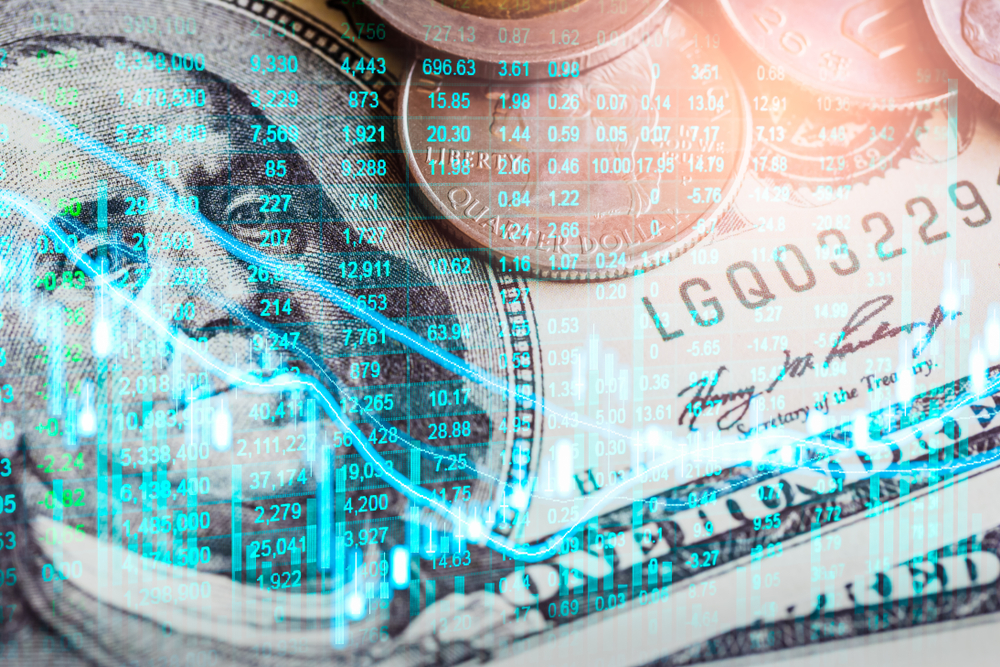We acknowledge that the forex market is the largest global trading market there is. As an entity that turns over circa $5 trillion each trading day, we could also put forward a claim that it’s the greatest example of efficient market hypothesis there is. The forex market moves in perfect unison with global sentiment relating to individual countries’ economic performance. There are millions of FX transactions occurring each minute through various decentralised forex markets, resulting in a perfect equilibrium being reached enabling global commerce to take place.

Not only is the forex market incredibly efficient it’s also the perfect illustration of the wisdom of crowds. With millions of contributors deciding the value of, for example, EUR/USD at any given moment the value you see quoted on your platform is a perfect balance of market sentiment, occurring due to all the available data both analysts and traders have available at their fingertips and on their screens.
This balance and equilibrium is one reason why our forex market does not oscillate wildly or move in huge ranges most days. A 1% daily range in a major pair is considered a significant movement, compare and contrast this to an individual share such as one of the FAANGs, which may rise or fall by 5%. Or the value of a crypto-coin which can trade in a 15% range on any given day. This relative stability makes FX trading a highly compelling and appealing challenge. It also illustrates that if individual traders control their risk and make efforts to gain an understanding of probability, they shouldn’t suffer either significant drawdowns, or losses in their account.
The definition of the wisdom of the crowd
The earliest references to the wisdom of the crowd relates to the Greek philosopher Aristotle who referenced the phenomenon in relation to politics; “it is possible that the many, though not individually good men, yet when they come together may be better, not individually but collectively, than those who are so, just as public dinners to which many contribute are better than those supplied at one man’s cost”.
The most famous reference to crowd wisdom relates to a 1906 country fair in Plymouth USA, when eight hundred fair-goers participated in a contest to estimate the weight of a slaughtered and dressed ox. Statistician Francis Galton observed that the median guess, 1207 pounds, was within 1% accuracy of the actual weight of 1198 pounds. This has contributed to the insight into cognitive science that a crowd’s individual judgments can be modelled as a probability distribution of responses with the median centred near the true value of the quantity to be estimated.
How the theory can be applied to trading
The wisdom of the crowd is highly relevant to the forex market and the value of any particular currency pair especially the major pairs due to the increased liquidity on offer. But is there any relevance to the wisdom of the crowd concept and the trading decisions retail FX traders should make? The simple answer is yes.
The forex markets are an excellent illustration of probability distribution, they also support the theory that when forex trading you’re not involved with a random, chaotic market. The market is not unpredictable either because in a similar fashion to Francis Galton’s experiment, we can make reasonable judgments as individuals and as a collective. We can with a reasonable degree of certainty take an estimate as to what the value of GBP/USD will be the following day and if we do our homework correctly and take the exercise seriously we’ll probably be within 1% accuracy.
Just think on that for a moment; you can legitimately make a prediction of the value of a currency pair within a 1% error. Of course we know in some ways we’re cheating because a range movement in excess of 1% for a major pair each day is unusual. However, we’ve proven how effective the wisdom of the crowd is, the challenge is how to build a credible trading method and develop an edge utilising this observation.
It’s a reasonable conclusion to suggest that if you place your stop within 1% of current price then most days you should be trading within a safe range. This decision could form the basis of your risk parameters. You could also extend your 1% metric to other aspects of your trading, most notably your probability of where price is headed estimate. Taking the 1% notion further you could begin to make predictions regarding what represents a reasonable profit gain on a currency pair on any given day, based on the fact that a 1% movement indicates trend movement as opposed to range movement. Matching and combining your risk estimates to your probability predictions, with the wisdom of the crowd at the forefront of your decision making, should form the basis of any successful trading strategy and help you to develop your edge.


